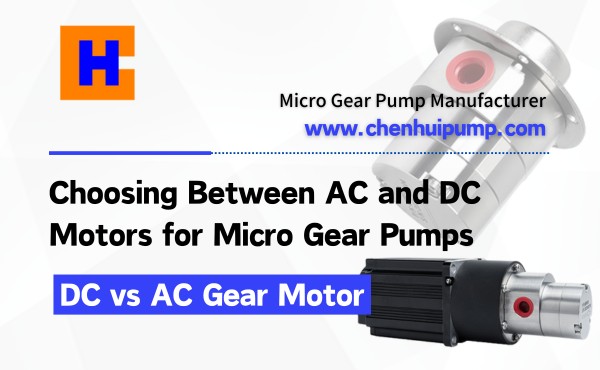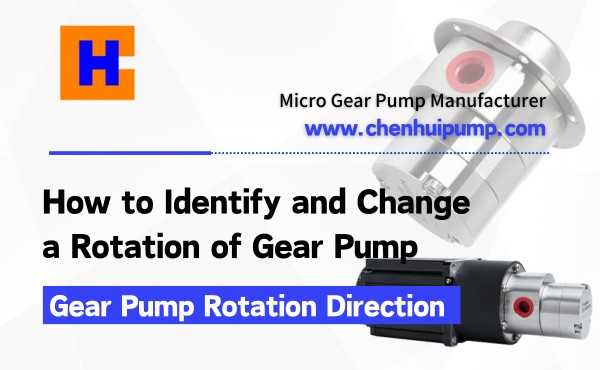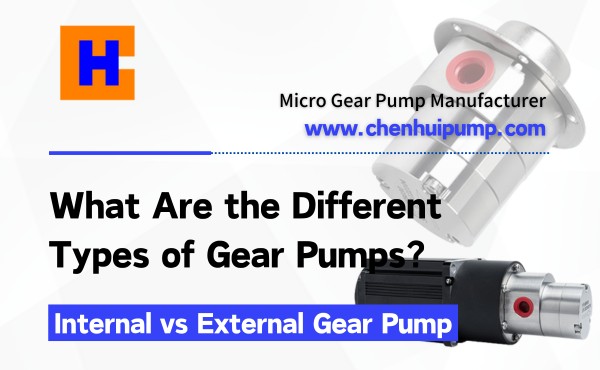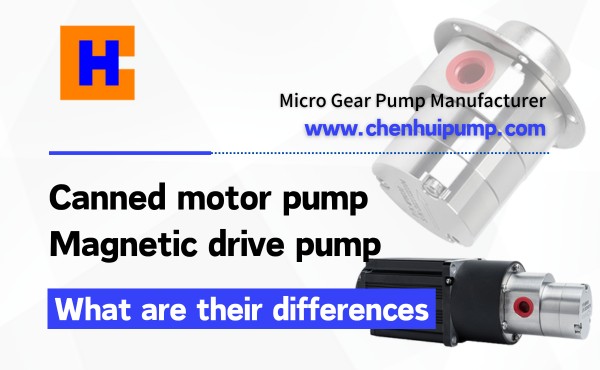Gear pumps play a vital role in fluid transfer systems, offering reliable and efficient performance across various industries. These pumps operate using rotating gears to move liquids with precision and consistency. However, not all gear pumps are the same. Internal and external gear pumps differ in design, operation, and applications, each suited for specific tasks.
Internal gear pumps handle viscous fluids efficiently with a compact structure, while external gear pumps provide high-pressure capabilities and precise flow control. Understanding these differences is crucial for selecting the right pump to optimize performance and ensure long-term reliability in industrial processes.
Internal gear pump
How an internal gear pump works
An internal gear pump uses two gears to move fluid. The larger gear, called the rotor, rotates inside the pump housing. A smaller gear, known as the idler, fits within the rotor. These gears create a sealed chamber where fluid enters, moves through the pump, and exits under pressure. A crescent-shaped spacer separates the gears, ensuring smooth operation. The design minimizes turbulence, making internal gear pumps ideal for handling thick or viscous fluids.
Advantages of internal gear pumps
Internal gear pumps offer several benefits:
- Versatility: They handle a wide range of fluids, including oils, syrups, and adhesives.
- Efficiency: Their design reduces energy loss during operation.
- Quiet operation: The smooth movement of gears minimizes noise.
- Compact size: Internal gear pumps fit into tight spaces, making them suitable for small systems.
Applications of internal gear pumps
Internal gear pumps serve various industries:
- Food and beverage: They transfer syrups, oils, and other viscous liquids.
- Chemical processing: They handle adhesives, resins, and polymers.
- Oil purification systems: ZANYO’s oil purifier benefits from the precise fluid handling of internal gear pumps.
- Pharmaceuticals: They ensure accurate dosing of liquid medicines.
External gear pumps
How external gear pumps work
External gear pumps operate using two identical gears that rotate in opposite directions. These gears mesh together, creating a seal that traps fluid between the gear teeth and the pump housing. As the gears rotate, they move the fluid from the inlet to the outlet. This design ensures a consistent flow rate and makes external gear pumps suitable for transferring both low- and high-viscosity fluids. The simplicity of their mechanism contributes to their reliability and ease of operation.
Advantages of external gear pumps
External gear pumps offer several notable benefits:
- High-pressure capability: They can handle applications requiring significant pressure.
- Durability: Their robust construction ensures long-lasting performance.
- Versatility: They work effectively with a wide range of fluids, including high-viscosity fluids.
- Precision: These pumps deliver accurate and consistent flow rates.
Applications of external gear pumps
External gear pumps find use in various industries:
- Hydraulics: They power hydraulic systems in machinery and vehicles.
- Chemical processing: They transfer chemicals and other high-viscosity fluids.
- Lubrication systems: They ensure precise delivery of lubricants.
- Oil purification: ZANYO’s oil purifier benefits from the reliable performance of external gear pumps.
Comparing internal and external gear pumps
Design and construction differences
Internal and external gear pumps differ significantly in their design. Internal gear pumps feature a rotor and an idler gear, with a crescent-shaped spacer separating them. This design creates a compact structure, making them suitable for tight spaces. External gear pumps, on the other hand, use two identical gears that rotate in opposite directions. Their construction is simpler and more robust, which enhances durability. These differences influence how each pump handles various fluids and operating conditions.
Performance and efficiency comparison
Both types of gear pumps excel in fluid handling, but their performance varies based on the application. Internal gear pumps operate efficiently with viscous fluids due to their smooth flow and low pulsation. External gear pumps, however, perform better under high-pressure conditions and deliver consistent flow rates. While internal gear pumps are quieter, external gear pumps often provide higher precision in steady fluid transfer.
Maintenance and durability factors
Maintenance needs also vary between these two types of gear pumps. Internal gear pumps may require more frequent maintenance when handling certain fluids, especially those with solid particles. External gear pumps, with their simpler design, are easier to maintain and tend to last longer in demanding environments. However, both pumps benefit from regular servicing to ensure optimal performance.
Cost and budget considerations
Cost plays a crucial role in selecting the right pump. Internal gear pumps, with their intricate design, may have a higher initial cost. External gear pumps, being simpler, are often more budget-friendly. However, the total cost of ownership depends on factors like maintenance, energy efficiency, and application-specific requirements. Choosing the right pump involves balancing upfront costs with long-term benefits.
Conclusion
Internal and external gear pumps serve distinct purposes. Internal gear pumps excel in handling viscous fluids, while external gear pumps perform well under high pressure. Choosing the right pump depends on fluid properties, application needs, and budget. Consulting manufacturers like CHENHUI ensures tailored solutions for different types of gear pumps with precision metering capabilities.
Partner with CHENHUI for High Quality Micro External Gear Pumps
CHENHUI specializes in manufacturing micro external gear pumps, designed for applications requiring stable low flow and precise fluid transfer. Their compact design and durable construction provide consistent performance and long service life. Our expertise in precision engineering guarantees high-quality manufacturing and strict quality control. If you need a reliable micro gear pump for industrial applications, CHENHUI offers customized solutions to meet your specific needs.






















